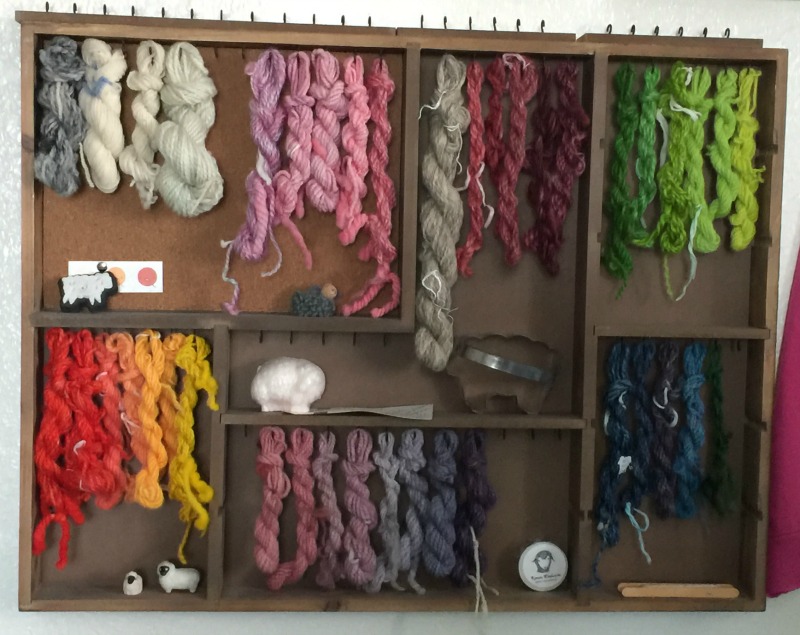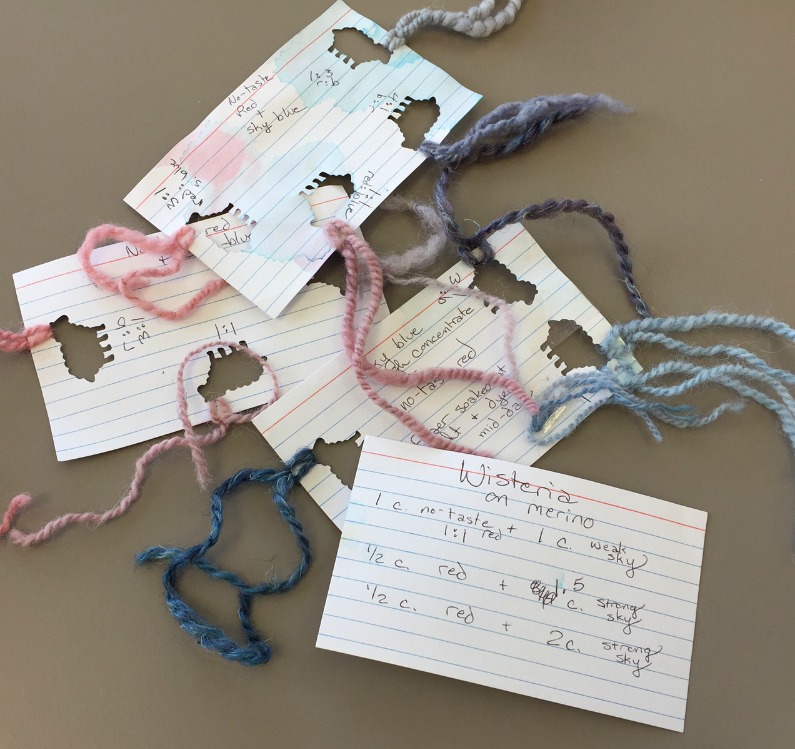Maybe you don’t play with yarn in every room of the house, but it’s a great way to learn some new tricks! My most hardcore spinning adventure to date lasted longer than 12 months, traveling from room to room: laundry, studio, living room, kitchen, and back to the living room. It began with raw fleece and ended with a favorite sweater. (Though technically, since I’m just now making a second sweater from this fiber, it still isn’t over!) The project drew upon my experience in scouring raw fleece, making batts with the drumcarder, and spinning a 2-ply yarn, but then I added another technique to my toolbox. I wanted a handspun sweater with dripping cables and subtle color transitions—that meant handpainting yarn with food coloring. Although this type of dyeing required a lot of time, it produced spectacular results.
Slow—but worth it!—yarn in my longest fiber project.
My odyssey began with ultra-special fiber. Around 2011, I discovered Peaceful Prairie Ranch and ordered 2 pounds of their raw merino, which may be the best merino I’ve ever handled. This batch got scoured in the washing machine; next I took a handful into the studio for drumcarding and sampling as a worsted-weight 2-ply. I loved the sample so much, I bought a share in Peaceful Prairie’s CSA (community-supported agriculture) and waited breathlessly for 2 more pounds of washed wool to arrive. I quickly finished the drumcarding in my studio thanks to some great music and audiobooks. (Plus I couldn’t keep my hands off this fleece.) From there, I relocated to the living room for delightful marathons of television, spinning, and plying. By this point, I had about 60 ounces of soft cream yarn, some fluffy and some still oily. (When Peaceful Prairie washed fleece for my CSA share, they got all the lanolin out. My scouring wasn’t so successful, since I was still using Dawn dishwashing liquid instead of a professional scour. I needed a few more baths to strip out all the grease.)
Dye samples adorn my studio.
Now the kitchen beckoned for a day of dyeing. (I call it a day because first I had to clear my junk off the counters and lay down trash bags for protection. The actual dyeing took maybe 4 or 5 hours.) I’d already mixed up stock solutions from food coloring, and then done a range of color studies so I could choose colors. I’d also selected a sweater pattern: Kate Gilbert’s exquisite Wisteria pullover. Since Kate’s pattern reminded me of a Louis Comfort Tiffany stained-glass window, I wanted to replicate some of Tiffany’s breathtaking colors. I divided the skeins into 3 batches and painted some in shades of mauve-pink-lavender, some in blue-mauve, and others completely blue. Gail Callahan’s essential book Hand Dyeing Yarn and Fleece walked me through handpainting techniques and set the colors with vinegar.
Recipe cards for my Wisteria colorway.
Finally, after my damp skeins dried, I could start knitting—and once I started, I didn’t stop until the sweater was finished. Nine days later, it was done and resting on blocking mats. I had shaded the colors: mauve-pink-lavender skeins at the very bottom and top of the sweater, transitioning into blue-mauve and then blue. (If I plan another shaded sweater, I’ll alternate skeins in the transition areas, because the color shifts are too abrupt on this one. But you know how it goes when you’ve been working on a project for over a year.) I wear my Wisterias sweater frequently, and whenever anyone compliments it, I have to recount the whole dyeing and spinning adventure. Slow yarn makes for a long story!
—Deb




